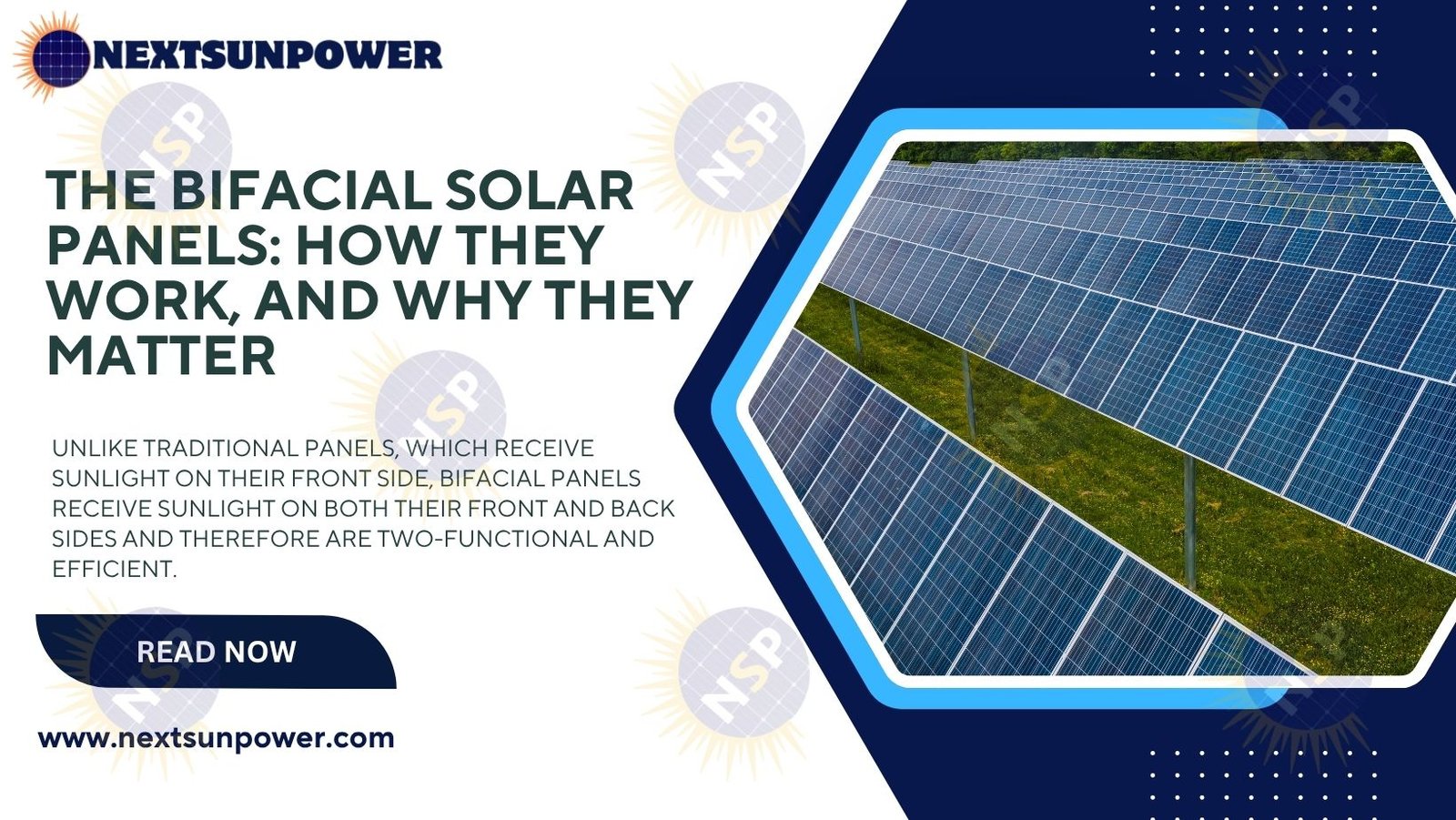Solar power is revolutionizing the way we are energizing homes and businesses, and leading the pack in the revolution is bifacial solar panels. Unlike traditional panels, which receive sunlight on their front side, bifacial panels receive sunlight on both their front and back sides and therefore are two-functional and efficient. In this article, We will learn How bifacial solar panel Work, their Pros and Cons, and how they could be a game-changer as far as renewable energy is concerned..

What are Bifacial Solar Panels?
Best bifacial solar panels are able to Seize the light on both sides of the panel, front and rear. Their two-sided construction equips them with a role of collecting direct sun rays both in front and at the back and illumination from reflection on other surfaces such as water, soil, or even surrounding structures and endows them with their capacity of collecting even more power. They obtain what reflects on other surfaces, to receive illumination as light comes bouncing towards them back to enable them to be very efficient.
How Do They Work?
Half of the bifacial panel is under direct sunlight and the other half is under reflected light from the environment.” The configuration can generate more electricity than the traditional monofacial panels, particularly in the case of high reflectivity.
Benefit of Bifacial Solar Panels
1. More Energy Output
Bifacial panels generate 30% more power than a normal panel, varying with installation and conditions. Both sides of the panel can harness light and generate electricity, particularly in reflective conditions.
2. Space Efficiency
These solar panel are of suitable size for the space available in the room. Their increased efficiency enables you to get the same with fewer numbers of panels, hence saving space and, in certain situations, reducing the installation cost.
3. Longevity
Double glass is favored by bifacial panels, thus being double strength and climate condition-proof, i.e., wind and snow. This design can lead to extended lifespan and reduced maintenance cost.
4. Looks
Open bifacial panel design can appear more elegant, particularly where looks are a matter of concern, i.e., on building or office roof tops, Homes
Drawbacks of Bifacial Solar Panels
1. Higher Initial Investment
Bifacial Solar panels are more costly than regular panels due to intricate design and material.
2. Installation Issues
Installation of bifacial panels must be well planned so that they become highly efficient. Tilt, height these are must be taken into account.
3. Based on Reflecting Surfaces
Backside energy gain is dependent upon base surface reflectance. In low albedo (reflective) conditions, extra energy gain will be zero.
4. Maintenance
Both sides of the panel need to be maintained clean for efficiency, and they can be used as maintenance work along with regular panels.
Vertical Bifacial Solar Panels
East and west direction facing vertically mounted bifacial solar panels receive sunlight in the morning and evening. This type of orientation would be extremely useful in certain climatic conditions.
Advantages of Vertical Installation
Space Optimization: Vertical panels are straightforward to retrofit into fence or divider and therefore are best suited for space with less space.
Less Soiling: Installed higher, they reduce dust and snow soiling, reducing maintenance needs.
Increased Energy Yield: Gathering energy from the sun at more than one location in a day provides a more consistent energy yield.

Top Bifacial Solar Panels
When selecting the best bifacial solar panel, a few things to consider are efficiency, lifespan, and company reputation. Some of the best ones are:
- LG NeON 2 BiFacial: Efficient and extremely durable.
- LONGi Hi-MO4: Provides the best performance even during unstable conditions.
- Canadian Solar BiKu: Provides good value for money with the best performance.
- Trina Solar Duomax Twin: Provides Long Lasting build with ability to endure tough weather.
- Jinko Solar Swan: Gives high level energy output with latest technology.
FAQs
Q1:How are bifacial solar panels work?
A: Solar panels that are able to catch light on the both sides and generate more electricity than standard panels that’s how bifacial solar panel work.
Q2: Are bifacial panels well suited for household usage?
A: Yes, if the mounting surface is with reflective surfaces such as white roof or ground cover.
Q3: What additional energy do bifacial panels deliver?
A: 30% more energy, subject to installation and climatic conditions.
Q4: Is bifacial more maintenance intensive?
A: Not much, as both sides have to be clean so that they can work to their optimum levels.
Q5: Is vertical bifacial superior to conventional installations?
A: Horizontal or vertical installation can be superior in some cases, i.e., limited space or very high morning and evening sun points.
Conclusion
Bifacial panels are a game-changer for solar, maximizing use and efficiency. More costly to install and more complicated, their benefits in the long term may be worth these negatives. Knowing what are bifacial solar panels and how they may be utilized can help you make the ideal decision for your energy requirements

Leave a Reply